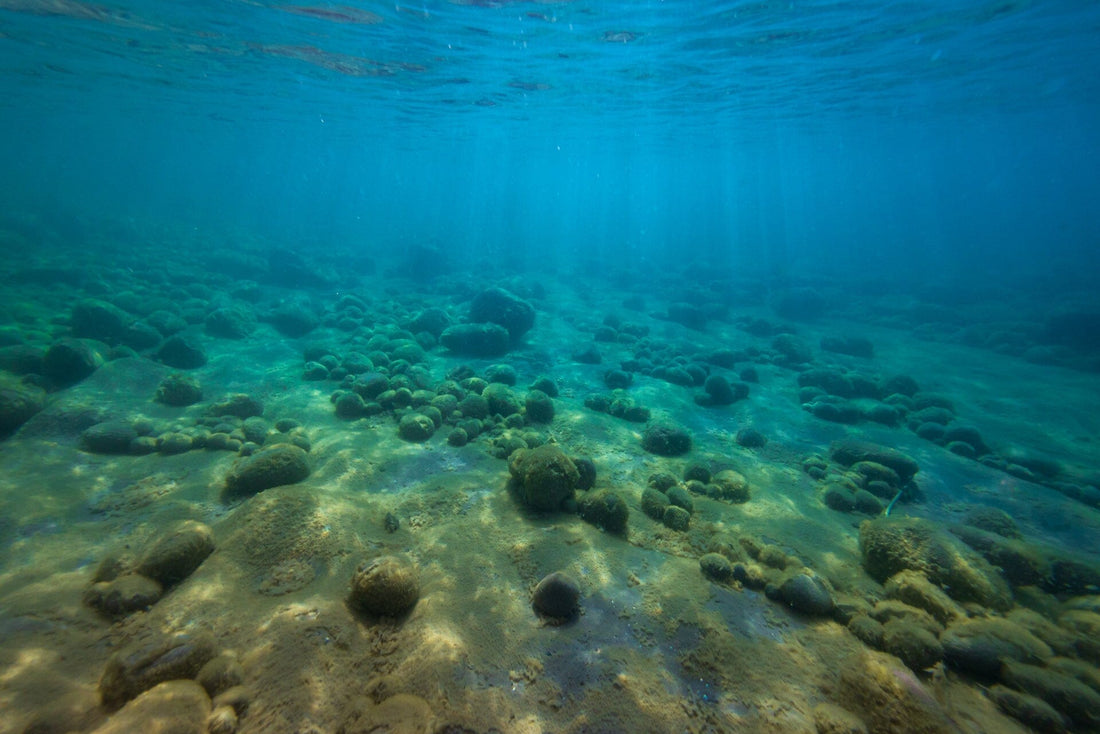When and Where to Use a Diffused Aerator
Maybe it’s a pond for your backyard, and maybe you have excess nutrients in a wastewater lagoon or small lake or drainage pond, it might be that instead of a floating pond fountain or aerator you need diffused aeration, or bottom aeration using a diffuser system.
Instead of utilizing surface aeration, diffuser aeration will improve your water quality from the bottom up. Typically, that means using a compressor housed at the shoreline (to quiet it and to shelter it from the outdoors weather), weighted air lines, and diffuser assemblies that will be placed at one or more locations at the bottom of the pond or wastewater treatment facility or drainage basin. The compressor will pump the air into each diffuser assembly, which releases small air bubbles to the surface of the pond. As the bubbles rise from the bottom, they also carry up with them water, thus mixing the pond water and creating oxygen transfer. This oxygen transfer vents the awful smelling gasses that form at the bottom of the pond.
What is a Diffuser Assembly? 
A diffuser is a critical component of a diffused aeration system. This is because it’s the piece that delivers the bubbles and mixing action into the water. Diffusers vary in shape and material, but they all consist of a base, rubber substrate that releases air, and connection points for weighted air lines to the air compressor. Diffusers are submerged and rest on the bottom of the water and are responsible for the continuous water movement that induces oxygen and increases water quality overall. Temperatures in the pond stabilize because of the decrease of water stratification in the pond or lake. The environment makes for a much healthier life for fish.
Where Would You Install a Diffused Aerator?
Kasco recommends diffused aeration in water 8 ft. and deeper, though other companies recommend you use diffused aeration at 6 feet. We at Fountain Mountain usually compromise and say 7 feet. If your pond is shallower than 6 feet, though, usually diffused aeration is not your best bet, as the bubbles need time to move water toward the surface and create oxygen transfer.
The Benefits of Diffused Aeration (Bottom Aeration)
- Increased oxygen-transfer, much less incidence of fish kill
- Prevention of pond turnover from stratification
- Increased fish populations
- Reduction of mosquito life by breaking up of surface tension reproduction
- Unfavorable environment of algae growth
- Decreases muck on the bottom
- Vents dangerous and foul-smelling gasses
- Provides oxygen in winter months keeping water and fish healthy all year round
What Makes a Good Diffuser?
- A diffuser system is best if it produces a medium to fine bubble (3-6 mm in size)
- The diffuser system should be weighted to it remains upright and in one place
- The diffuser assembly should not clog
- The diffuser assembly should lift as much water as possible
Compressors must be housed in a protective cabinet that is properly ventilated to prevent overheating and you should use a cabinet that properly quiets the compressor’s noise.

So WHY do we recommend Kasco?
Easy. Their units are Independently tested to be 11-44% more efficient than competition, available in several configurations, and with the best warranty on the market.

